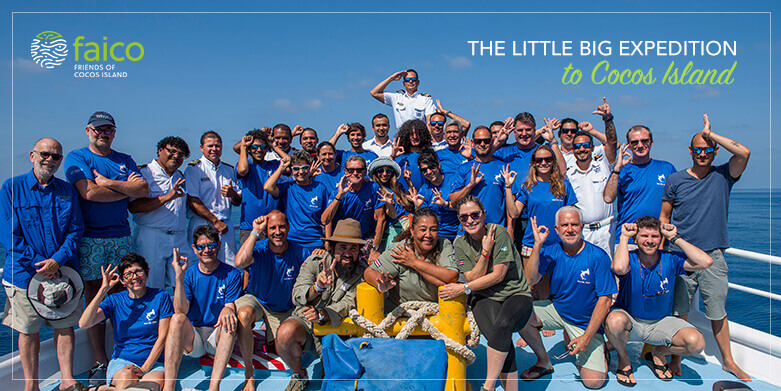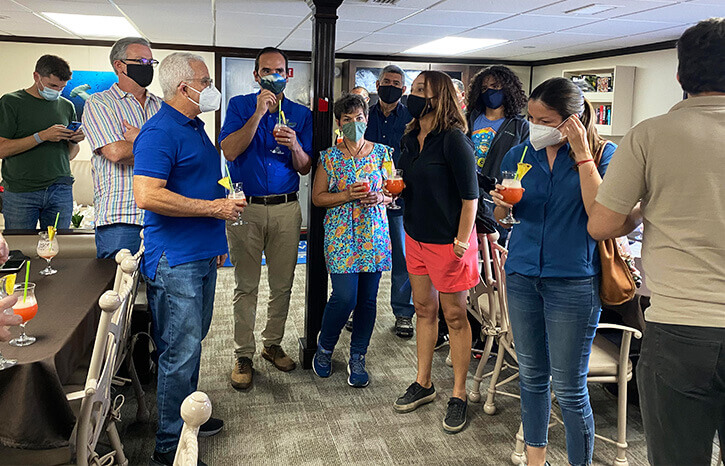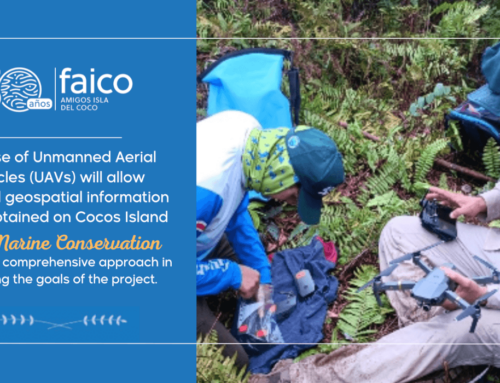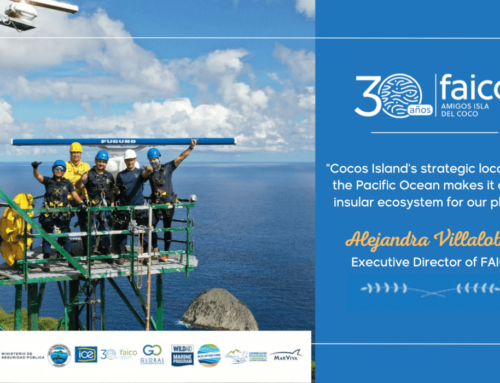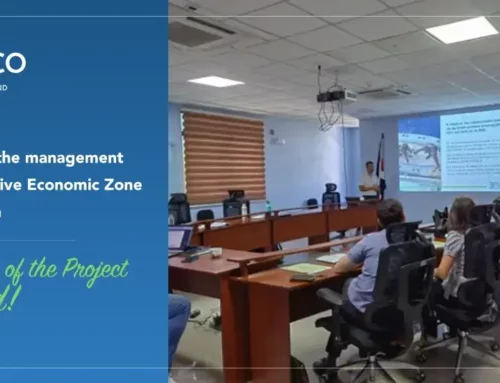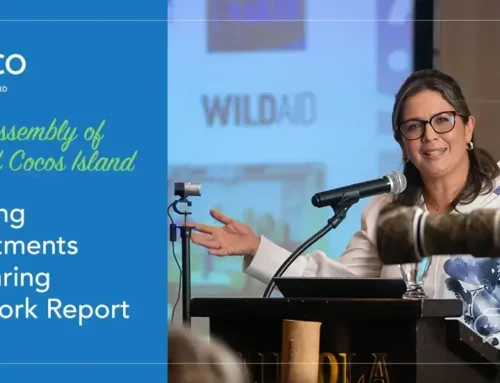A group of professionals, members of the academia, administrators, photographers, environmental activists, scientists, donors, and citizens visited Cocos Island with a primary objective: to establish strategies and achieve allies that facilitate the strengthening of the ACMC’s marine protected areas within the framework of the protection of 30% of our oceans.
“You are about to discover one of the great wonders of the world”, they told us. We were still at the port, and the mission had several assignments. The port of Puntarenas is the meeting and departure point. When you are there, you still do not have a clear idea of what you are going to find in front of you in a few hours. The mere idea of going to Cocos Island gives you butterflies in your stomach.

We have all seen the treasure in photos and videos; it is ours; it belongs to humanity, but it is Costa Rican. Appreciating the Island is not only possible by traveling those almost three days through the open sea. Valuing Cocos Island is valuing that family jewel that we will not wear around our necks, but that we know belongs to us.
The country’s environmental authorities waved goodbye to the expedition: the Minister of the Environment, Andrea Meza, and the Vice Ministers, Franklin Paniagua and Haydée Rodríguez, were present.
We are already in the Okeanos II that will take us to Cocos Island. The group is heterogeneous: activists, members of the academia, businessmen, photographers, managers of Friends of Cocos Island (FAICO) and of the Cocos Marine Conservation Area, park rangers, administrators, donors, among others, made up the group. The activity was carried out with the protocols established by health authorities.

Leaving the mainland with the feeling that you are about to discover that Island that is talked about so much, is unforgettable. On one side there is absolute blue; on the other side, the port gets smaller and smaller. You feel the wind in your face and butterflies in your stomach. We are about to see and do something historic.
On the trip, you must combine some leisure and rest with information about what we are doing. After the recognition from environmental authorities about the importance of the expedition, already on the boat, we also talked about the donations to be delivered to Cocos Island National Park: A series of equipment and supplies to be used at the base of operations of the marine protected area, which will be of great benefit to more than 20 park rangers and volunteers.
Time passes and the port disappears and suddenly, everything is blue. One imagines a small point, us, surrounded by the immense sea, the ocean.
If we could see from above, we would be able to dimension it. Humanity is just a set of dots in a blue, or green, or brown space. The immensity of nature is palpable in moments like this.
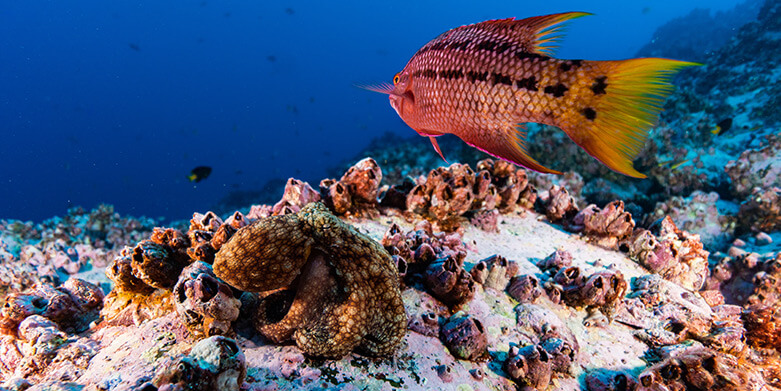
El Parque Nacional es uno de los diez mejores destinos de buceo recreativo en el mundo

We had the opportunity, on the boat, to see a tourism video for Cocos Island National Park. The National Park is one of the ten best recreational diving destinations in the world, and it receives an average of 3,000 tourists a year, 95% of whom are foreigners. When we watched the video, we realized the importance of joint action between the public sector, the private sector, and the awareness of citizens. Still on the boat, surrounded by blue, someone makes us think about the importance of the fact that from land, from the continent, from every corner of Costa Rica, we act in defense of our treasure: Cocos Island.
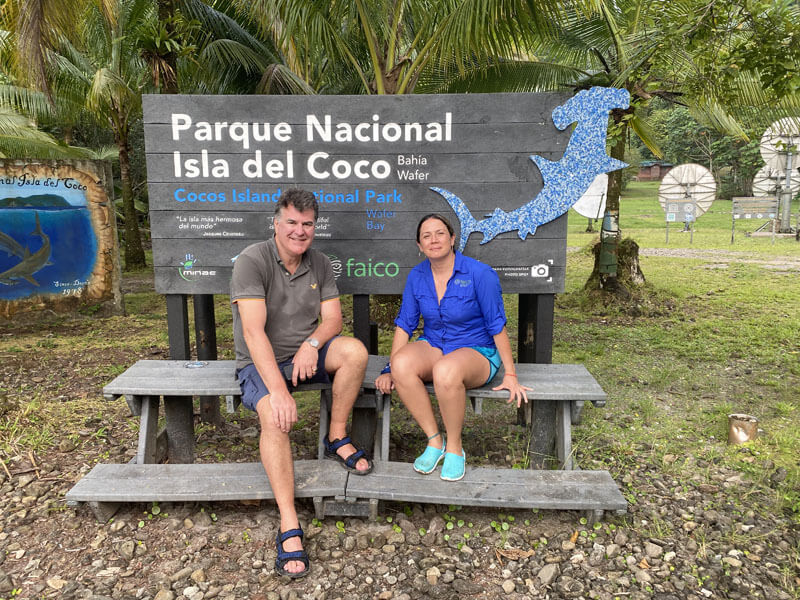
“There is always room to think about safeguarding our jewels, our main assets, our nature”, explains Alejandra Villalobos, executive director of FAICO. Being there, on the journey, is fascinating; to begin to hear of the wonders that we are about to witness is a great privilege. But the important thing about knowing it, as we all know it, is to defend and protect it. Citizens play a fundamental role. Being environmentally conscious, acting accordingly from land, helps protect the sea and helps protect the Island. The Island is ours and for that we are proud and committed. To reinforce that feeling, still in Okeanos II, we receive talks about the importance of conserving and protecting marine and terrestrial ecosystems. Generating spaces for conversation on strategic issues allowed us to delve deeper on the objectives of the trip and propose actions that promote the work of FAICO towards the strengthening of the Cocos Marine Conservation Area.
During the expedition, 13 keynote talks were held. Suddenly, there is what we were all waiting for. The ship’s captain announces that a green dot can be seen at the bow. There it is. You still must use a little imagination, though; but we see it as a bright green dot in the middle of the deep blue. It is the Island, still far away, still hours away. We had already enjoyed a splendid sunrise in the middle of the ocean. We share then, between the natural wonders and those who participate in the expedition, the idea of vastness and of smallness. We are great if we can keep this vastness healthy and protected. And for this, the park rangers and all the staff at Cocos Island National Park and of all the protected areas of the country are essential. Within the future scenarios of climate change, marine protected areas offer fundamental opportunities for the reduction of disasters associated with extreme climate events, provision of ecosystem services for human well-being and economic development of the country, such as the provision of water or fishery resources, and maintain the resilience of ecosystems.
That is why it is imperative to raise awareness and establish partnerships to stop the loss of species and protect the ecosystems that are vital to human health and economic security, by protecting at least 30% of marine and terrestrial ecosystems by 2030.
It is evident that the accelerated loss of natural areas in the world represents a serious threat to the health and integrity of all living things. Scientists have documented that humans have severely altered 66% of the planet’s oceans and 75% of the land and agree that a scientifically credible intermediate goal to reverse this trend is to achieve a minimum of 30% protection by 2030.
Faced with these great challenges, Friends of Cocos Island organized this expedition in coordination with the Government of Costa Rica, through authorities such as the Ministry of Environment and Energy and the National System of Conservation Areas for the benefit of the Cocos Marine Conservation Area to raise awareness and ensure that the participants of this trip are main actors and spokespersons for this important message.
Why is the expedition immense? Why is it so important? Who participated and what did they do? We will see it later.


